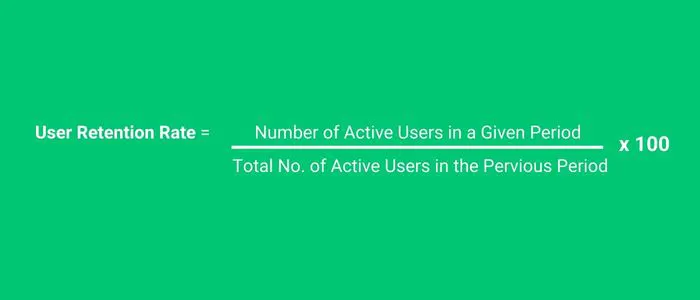If you are stuck with the question of ‘How to increase Website Traffic’ then this blog is for you. It highlights the benefits of integrating HTML5 games into your website as a strategy to attract more visitors and keep them engaged.
Website traffic and user engagement are essential metrics for determining the performance of a website. Among the 2 billion websites in the world, only 400 million are active, thereby implying the need to draw in visitors.
On top of that, the majority of users want a website to load within 3 seconds. So, how to drive traffic to your website? How to increase user engagement? How can we make sure a website not only attracts visitors but also keeps them engaged?
To address this challenge, HTML5 Games has come to your rescue. The introduction of HTML5 games in websites can boost website traffic by providing innovative and engaging user experiences.
HTML5 features powerful functionalities for developing games with dynamic multimedia functions for immersive experiences. Let’s dive deeper!
What is Website Traffic?
Before we go into the details, it is important to understand what exactly website traffic is in the online space.
Think about a mall or a public place. The number of people who visit it or walk through it makes up the footfall of the area over a certain period. In the digital world, the same concept translates into website traffic.
“Website traffic is the total number of people who visit a website during a specific timeframe.”
The common ways for measuring website traffic using any analytics tools include the number of people who visit a site, the pages they explore, and the duration of their visits.
Tracking website traffic is crucial as it reflects its popularity among its target audience. High traffic levels indicate higher visibility, increased brand awareness, and potential revenue growth for businesses.
What is User Engagement?
User engagement is an integral factor related closely to website traffic. If you want to know how to generate traffic on website, you must learn about effective strategies for boosting user engagement as well.
Taking the above example, user engagement can be likened to what people do once they’re inside the mall. Do they visit multiple stores? Do they sit down for a coffee or a meal? Do they interact with the displays?
“User engagement refers to the active participation and interaction of users with a website during a specific timeframe.“
The common ways for measuring user engagement using any analytics tools include user interactions on the website such as downloads, clicks, sharing activity, etc.
Tracking user engagement is crucial as it reflects how satisfied users are with a website. A high engagement rate signals a positive user experience, leading to higher satisfaction levels and potentially improved retention rates.
How to measure Traffic and Engagement on a Website?
Understanding the performance of your website is important to determine areas for improvement. By measuring traffic and engagement, you can develop strategies to enhance the user experience, boost traffic, and foster higher levels of engagement.
Out of all, here are the three most important metrics for measuring website traffic and engagement:
1. Average Time On Site
If users are spending more time on your site, it means they find the content engaging and relevant, which is a positive sign of user satisfaction.
Conversely, if their average time on site is low, it may indicate that your content is either not liked by them or they are not finding what they’re looking for, which ultimately leads to quick exits.
With this metric, you can identify pages of your website that may be underperforming. Enhancing these areas is a must for a successful user engagement strategy which eventually, contributes to high traffic.
Generally, the average time spent on site should be at least 60 seconds but it will depend on the type of industry you are in.

2. Bounce Rate
Bounce rate is the percentage of visitors who enter your site and then leave rather than continuing to browse other pages or content.
While a certain level of bounce rate is considered normal, unusually high rates indicate poor user experience. You must make efforts to optimize the content, design, and overall user experience to reduce low traffic and engagement issues.
Generally, websites must look to maintain bounce rates below 40%.

3. User Retention Rate
User Retention Rate is the percentage of users who return to your site over a given period after their initial visit.
Organizations seeking ways to engage customers can rely on this metric for determining the user-friendliness and efficiency of websites.
The average user retention rate should be around 20% to 25% and could vary according to the industry. You must ensure that users find enough value to keep coming back to your website, fostering high levels of traffic and engagement.

Why does your Website suffer from Low Traffic and User Engagement?
While numerous factors can contribute to low traffic and user engagement on a website, one of the primary reasons is the presence of low-quality, irrelevant, and unengaging content.
If the roots are not strong enough to hold the tree, even though it has bore delicious fruits, the tree will fall down someday.
Similarly, if your product is better than your competitors but the content on your site has failed to capture the interest of your users, no matter what, they will never try out your product. And you will lose your hold in the market slowly and gradually.
Now you would have known that content is a significant factor in attracting and retaining visitors. Without it, even the most technically optimized websites can struggle to motivate their users to try out their products.
As the popular saying goes, “Meheman bhagwan hota hai,” meaning “A guest at home is like God,” likewise it is important to treat your guests (website visitors) well by offering high-quality informative content that meets their needs and interests, encouraging them to come back.
Thus, focusing on improving the website’s content quality is important for reversing trends of low traffic and user engagement.
How to Increase Website Traffic and User Engagement?
We have identified the problem. So, now how to increase website traffic? Let’s find an innovative approach to solve this most common issue of today’s time.
To simplify the solution, we have broadly classified it into two categories:
Refine Your Existing Strategy
Revisiting and refining your existing strategy is a crucial step when your website suffers from low traffic and engagement. You must review your website branding strategy from a new perspective.
- High-quality Content- Your content must be informative, engaging, and tailored to the interests of your target audience.
- User Interface- Optimizing website design for a more visually appealing user interface will allow visitors to stay longer on your site.
- Loading Speed- Loading speed is an extremely significant factor. Improving it reduces bounce rates and provides a positive user experience.
- Mobile-friendliness- In today’s time when most users access the internet via smartphones, it is important to ensure your website is mobile-friendly.
- SEO Practices- Implementing other SEO practices (on-page, off-page, technical) can also improve your site’s visibility and grab more eyeballs.
Introduce Gamification In Your Business
To increase your website traffic, implementing gamification techniques can be a game-changing strategy that can significantly augment user engagement and traffic.
By adding challenges, points, rewards systems, or HTML5 games to your business, you provide users with interactive and fun elements that encourage them to stay longer on your website.
Got confused? If you don’t know about the gamification concept then check out this blog on Gamification of Business where we have covered the topic in detail.
Games add entertainment value to the content and multiply the time users spend on your web pages. This not only makes the user experience more enjoyable but also deepens the engagement with your content, leading to higher retention rates and, ultimately, increased traffic.
With gamification, you can find new ways to engage your customers such as through HTML5 games. These games can provide a new dimension to user engagement with powerful and engaging multimedia experiences.
What are HTML5 Games?
Now let’s understand what HTML5 Games are.
“HTML5 games are browser-based video games built with HTML5 and JavaScript, allowing users to play without the need for downloads.”
H5 games have gained popularity in recent years due to their ability to be played on web browsers like Google Chrome, Firefox, or Safari. The HTML5 Games market size is estimated to grow to USD 31.89 billion by 2030.
H5 games cover a wide range of genres, from simple puzzles and casual games to complex strategy games, catering to diverse interests and age groups.
The games’ efficiency in delivering memorable experiences to website users is one of the major reasons to adopt them in new website designs. Now, this can be your reason too!
Check out some amazing HTML5 Games from different genres on Gameskite.com!
They are widely used by developers, businesses, and content creators to attract and engage audiences on websites and other digital platforms. If developing the games isn’t possible for you, you can purchase them from various HTML5 game development studios.
Why can adding HTML5 Games prove to be a boon to your Website Traffic & User Engagement?
HTML5 games can serve as a promising tool to get traffic to your website fast with many value advantages. Its analysis is important for every business because H5 games offer a viable solution for improving both metrics.
Refer to the following advantages of HTML5 Games vis à vis low website traffic and user engagement-
- Interactive and Engaging Content
HTML5 games contribute to interactive content that actively engages users, motivating them to spend more time on your site. This interaction boosts user engagement, making your website a destination for both entertainment and information.
Example – An educational website could include HTML5 games to make learning a fun activity among their students. Visitors can play these games to learn new or complex concepts. E-learners can earn points for answering the correct questions and can utilize them to unlock more content on the website. Such a concept will keep users engaged and encourage repeated visits.
- Great Product Experience
HTML5 games can play an innovative role in enriching the product experience for visitors. Adding this creativity will showcase your commitment to providing value beyond traditional content, thus making your website stand out from the crowd.
Example – An e-commerce website could use an H5 game to let the users understand its products. For instance, an outdoor gear site can let its visitors virtually test camping equipment in different environments, thus attracting users’ interest in the products.
- Better User Experience
By adding games to your platform, you are contributing to a fun and interactive user experience. A positive user experience leads to retaining visitors and making them curious enough to explore other parts of your app or website.
Example – A travel blog could offer an HTML5 game that allows visitors to navigate a map and collect trivia about various destinations. This not only makes the site more interactive but also informative, encouraging them to explore more content.
- Increased Entertainment Value
HTML5 Games can add entertainment value to your website, making it more memorable and likely to be recommended to others, thus expanding your overall reach by grabbing new users.
Example – A music streaming service could use H5 games to boost the entertainment value. For instance, the game can ask users to identify songs or genres based on short clips, making the platform not only an entertaining place but also a fun space to gain music knowledge.
- Rewarding Users
Many websites use H5 games as a tool to reward their users for their loyal actions, such as signing up for a newsletter or completing a survey. Incentivizing encourages the users to interact more with your site.
Example – A fitness website could reward users with access to premium HTML5 games after they carry out a certain number of workouts. For instance, a game that challenges users to beat their running time in a virtual race can motivate and reward them for their fitness achievements.
- Increased Revenue
Engaging and entertaining content like HTML5 games can significantly augment website traffic. More traffic means increased revenue opportunities. It can be through direct sales, advertising, or sponsored content.
Example – A cooking website might include H5 games involving recipe challenges or ingredient hunts that can attract food enthusiasts. The game can be such that the players might be required to prepare virtual dishes under time constraints. Such a scenario not only boosts traffic but can also lead to revenue growth through sponsored ingredients or kitchenware promotions within the game.
From where can you get HTML5 Games for your Website?
If you are looking to add HTML5 games to your website or app for better user engagement then Freak X Games, an HTML5 game development company, is just a click away.
We are here to develop interactive and engaging games of different genres, including action, arcade, puzzles, sports, casual, and others, optimized to perform well on diverse platforms like browsers, iOS, Androids, etc.
If you want to publish H5 Games on your website or know about them in detail, contact us right away!

Final Words
In conclusion, HTML5 games stand out as a great solution in your quest for ‘How to increase website traffic and user engagement.’ H5 Games not only help in attracting a broader audience but also in keeping them engaged for longer durations.
As a result, this strategy can be a game-changer in the digital landscape, transforming passive visitors into active participants and loyal fans of your website.
Considering their potential, isn’t it worth thinking about how HTML5 Games could revolutionize engagement and traffic on your site?




Leave a Reply